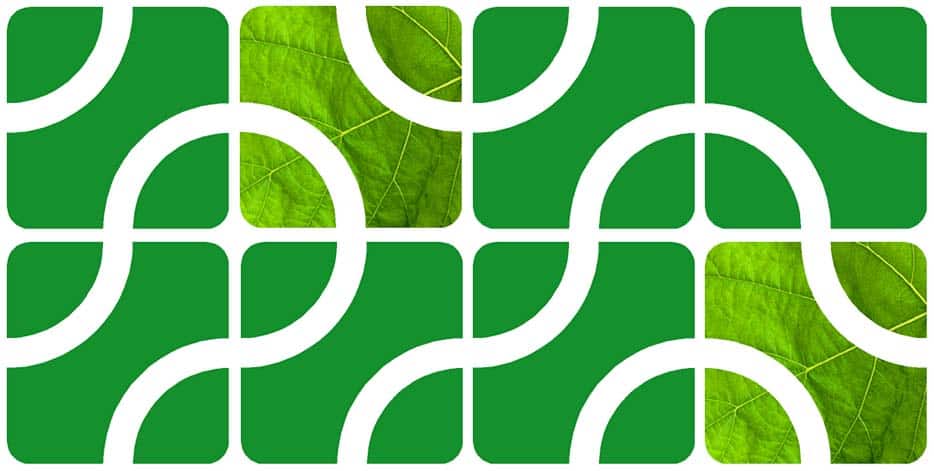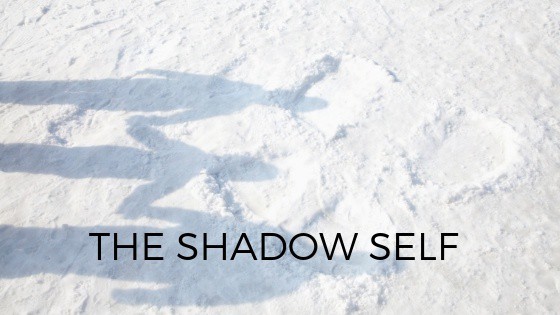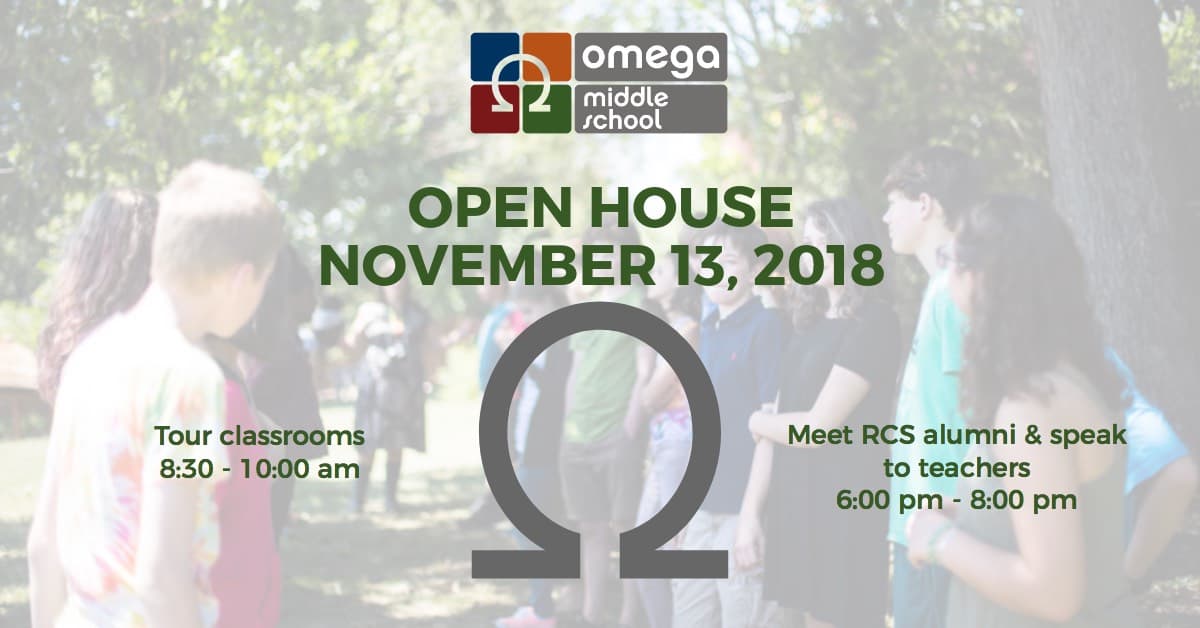
by Renee Owen | Nov 6, 2018 | Blogs, CEO's Kaleidoscope, Director's Blog, Home Page News
Kaleidoscope, October 2018
I wrote this Kaleidoscope before we had another national tragedy occur: The Tree of Life Synagogue massacre. It is with a broken heart that I add this “introduction” to Kaleidoscope.
Collaborative for Spirituality in Education
As I write, I am nestled safely indoors at the beautiful old Rockefeller home in New York, where 12 heads of schools are meeting to discuss how spiritually supportive schools can help to heal our world. This is the work of the Collaborative for Spirituality in Education (CSE) – an organization started by Dr. Lisa Miller of Columbia University Teachers College (Author of The Spiritual Child).
Through funding from the Rockefeller Brothers Fund and the Fetzer Foundation, the Rainbow Institute and several other schools are being paid generously to share our best practices in spiritual pedagogy. The CSE seeks to influence American education, at large, to honor the whole child and to create a more just and peaceful democracy.

Important Work
It’s an honor to be invited to do this important work, and I am developing relationships with these other heads of schools and faculty who are a part of the CSE. Some of these heads of schools are from Jewish Schools, who were here when the news of the tragedy hit, rather than home with their school community.
Together, we have been helping them bear the pain of this tragedy…and they have been helping us all remember the message of the Jewish people. “We are the people who were commanded by Moses to ‘Choose life’ and ever since, despite the tragedies of our history, past and present, have always striven to choose life and sanctify life.” (Rabbi Lord Jonathan Sacks).
Meeting hate with love
The continual message from these school leaders has been one of meeting hate with love. We chose life. We chose love. Though we are weary, we yet love. In the words of Dr. Martin Luther King:
“Darkness cannot drive out darkness; only light can do that. Hate cannot drive out hate; only love can do that.”
This is the message we will always share at Rainbow Community School with our children and with the world at large.

Harvest Season
It is harvest season, a time when the earth sheds its green and the light begins to shift, but the strength of life is ever apparent in nature’s cycles of renewal. This is the time of year for getting cozy and settling in. The children have become comfortable with the rituals and routines of the classroom. Their relationships with their teachers are becoming well-established.
[bctt tweet=”It is harvest season, a time when the earth sheds its green and the light begins to shift, but the strength of life is ever apparent in nature’s cycles of renewal. This is the time of year for getting cozy and settling in. ” username=”@rainbowcomsch”]
Thanks to the intentional work of all RCS faculty, students should feel comfortable to take risks in all domains, including testing their boundaries. Along with comfort comes developmentally appropriate challenges.

The shadow self
In many traditions, this is the time of year the “shadow” starts to reveal itself; and for Rainbow students, this is no different. The shadow is both a mystical concept and a psychological theory. Simply put, our shadow is the part of our being that we may consider inferior, or our “dark side” that we may repress or deny. However, the shadow need not be negative. Some consider the shadow to be the seat of human creativity.
How is your child exploring their shadow self? Perhaps they are toying with their mischievous side. Maybe they are discovering how they can avoid challenges, such as going to school or completing homework. They might be taking on new social personas, learning how they can “control” other children in positive or negative ways. Some children may be experiencing their first social rejection by a childhood friend.
All of these examples are normal, and even expected. The important thing is that we, as caring adults, provide a loving environment that doesn’t judge or shame them (or each other). We adults try to hold a balance between guiding them, while also allowing them to learn from the natural consequences of their mistakes.
Feel free to reach out to your child’s teacher or the counseling office for a check-in if your child’s behavior is particularly puzzling or if they are starting to have negative experiences at school. Will Ray, Director of Counseling, can be reached at extension 430. As director, Will works part time on campus; but someone in the counseling department is almost always on site. Katie Ford specializes in middle school. Elise Drexler is a play therapist. Kasie Caswell is an intern from Eastern Tennessee State University this year. Together, they make up a holistic team of caring providers.

Día de los muertos
To honor and recognize the changing season–a time of unveiling our inner selves—we will hold a community fire on Friday, November 2 from 9am until the end of the day in the outdoor classroom. Some classes may incorporate the fire with their Día de los Muertos celebration. The space is open to all families, students, and staff. Please come and allow yourself to just be. Click here for the poem teacher Jason Cannoncro attached with the invite to the fire.
Making Learning Visible
You may have noticed a new section in Rainbow Reminders. Each week, at the end of the email, there is a new section called “Making Learning Visible” that describes various aspects of our curriculum and academic program. Making Learning Visible provides a peek into a different classroom each week, with a description of how various classroom activities help students learn and succeed.
Testing 1,2,3
Another marker of fall at Rainbow is standardized testing. We have nearly completed all testing, except for make-up sessions. In case you missed Making Learning Visible in the last Rainbow Reminders, click here to read about why we test and how we use test scores to help inform instruction. Last year’s scores are linked in the article with an easy-to-read graph.
What the heck goes on in Omega?!
Our middle school program is unique, and changes greatly from the elementary program. Middle school children become developmentally ready for demanding cognitive and executive function challenges. Our middle school students are given a lot of responsibility. “Know Thyself” is the theme of the Omega Middle School. Students are on a personal journey to discover their purpose and potential. They learn through community and through communing with nature.

The Omega Open House
The very BEST way to learn about Omega? Attend the Omega Open House and the alumni panel. You can ask alumni any question you want. It’s never too early to start doing your homework. Even if your child is in kindergarten, it will help you understand what is ahead. The panel discussion is November 13, from 7-8pm.
It’s Campaign Time
I felt so good after making my pledge to the annual campaign! I love Rainbow. I love what a Rainbow education did for my kids. They are innovators in a changing world, and thriving. I know my contribution helps our vibrant programs.
I hope you will join me in pledging as soon as possible. The earlier you pledge, the less time we spend fundraising. That gives us more time to focus on what we do best – educating children! Click here to make your pledge. It’s easy to donate now, or you can pledge and RCS can bill you later.
Your financial support also provides moral support! Every time a pledge arrives for the annual campaign, a cheer goes up! Donations are a vote of confidence for our hard-working staff and volunteers.

Voluntary Equitable Tuition
Some people have asked about the difference between the Voluntary Equitable Tuition (VET) program and the Annual Campaign. The V in VET stands for “voluntary” — it is designed for people to voluntarily pay a higher tuition. The E stands for Equitable — parents who feel they can afford to pay a higher tuition do so out of the generosity of their hearts in an effort to make tuition more equitably distributed in our community (meaning those who can pay more do to help those who cannot). The VET specifically provides funding for those who cannot afford tuition, and it helps with teacher salaries.
Donating to the annual campaign
The annual campaign, on the other hand, is much wider. The hope is that everyone will donate to the annual campaign. The funds go broadly into operations. (If you want your annual campaign funds designated to a specific area or program, you can check that on your pledge envelope.)
We hope that people paying into VET truly think of VET as part of their tuition payment (albeit a tax-deductible portion), and still make their regular annual campaign donation.
While we wish fundraising were optional, as a non-profit, it is a necessity. Thanks for making it as fun and easy as possible. In this way, we build a stronger community.
What happened to the Parent Education Program (PEP)?
Last year, we asked parents to come to three required PEP meetings/trainings. The program is now different. This year, instead, we ask that parents attend at least two out of three of their class parent meetings. These meetings are the best way for parents to be engaged, to understand their teacher’s methods, to learn about their child’s developmental stage, and more. An administrator attends these meetings to answer questions and provide information.
Class meetings
By now, every class has had at least one meeting. Thank you for participating in this most important aspect of parenting at Rainbow.
The biggest complaint about Rainbow?
One person just told me their biggest grumble is the amount of email and communication they get. Indeed, it’s A LOT! Like, a crazy-beans amount of communication! In general, as a community school, parents have many things to focus on, give of their time and talent, and participate in many activities.
Some people are fortunate enough to be able keep up with most of it, while others are overworked and overwhelmed. But it’s a community. We just ask that each person does their best to support one another, even though we all have different circumstances.
Sometimes Rainbow can seem magical – and it is! But behind all that magic is a lot of work and cooperation. The real magic is community, support, and collaboration.

Reach out and thank a board member
The new Rainbow Community School Board has been diligently working. Over the summer they attended trainings and began the process of revising a number of board policies.
This is a monumental undertaking that involves carefully analyzing each policy, discussing what it means, its ramifications, and making any needed revisions. These meetings are rich and thought-provoking. The board is truly committed to what is most important: the students! You will be able to identify board members at various campus events. They will have a button that lets you know who they are. If you see them, please thank them for their wisdom and hard work.
As a friendly reminder, don’t forget to VOTE! Early voting goes until November 3.
The world may seem pretty wobbly and often disturbing these days. But when all of us just do the simple things within our control, it makes a difference.
There is so much hope. Everything can change in an instant! I leave you with an excerpt from a poem my husband recently shared with me. (My favorite line is in bold.)

Someone is dreaming of adoring you
Someone is writing a book that you will read in the next two years that will change how you look at life.
Nuns in the Alps are in endless vigil, praying for the Holy Spirit to alight the hearts of all of God’s children.
There are Tibetan Buddhist monks in a temple in the Himalayas endlessly reciting mantras for the cessation of your suffering and for the flourishing of your happiness.
A farmer is looking at his organic crops and whispering, “nourish them.”
Someone wants to kiss you, to hold you, to make tea for you.
Someone in your orbit has something immensely valuable to give you — for free.
Something is being invented this year that will change how your generation lives, communicates, heals and passes on.
The next great song is being rehearsed.
Thousands of people are in yoga classes right now intentionally sending light out from their heart chakras and wrapping it around the earth.
Millions of children are assuming that everything is amazing and will always be that way.
Someone just this second wished for world peace, in earnest.
Someone is fighting the fight so that you don’t have to.
Some civil servant is making sure that you get your mail, and your garbage is picked up, that the trains are running on time, and that you are generally safe.
Someone is dedicating their days to protecting your civil liberties and clean drinking water.
Someone is regaining their sanity.
Someone is coming back from the dead.
Someone is genuinely forgiving the seemingly unforgivable.
Someone is curing the incurable.
Someone loves you more than you can ever know.
Me. You. Some. One. Now.
~author unknown

by Renee Owen | Apr 29, 2016 | Blogs, CEO's Kaleidoscope, Director's Blog, Publications
Kaleidoscope, April 2016
The Maypole gets wrapped on Monday at the annual Rainbow May Day Celebration – a quintessential Rainbow event. Fairies, elves, ancient dances, strawberries and cream – anyone who can slip away for the morning from 10:30 to about 11:30 will be filled with the delights of spring and the gift of life. You are all invited!
The LONG Summary of the March 22 Community Circle
The last Kaleidoscope I published was right before the March Community Circle, which was about “Cracking the Nut.” How can we keep tuition affordable, while increasing teacher salaries and improving equity? We started the meeting with an overview of how the budget is developed each year at Rainbow, stressing that since 80% of our expenses are staff salaries and expenses, any raises in staff pay directly increases tuition. We noted that our overall financial standing is very solid as a non-profit organization.
There seemed to be general agreement that the need to pay our teachers at least equal to district public school teachers is paramount, and whether the money for that comes from fees or increased tuition, people are behind that effort in spirit. In fact, people have made the point that paying our teachers fairly is an equity issue.
However, there was also concern that increasing tuition would create a hardship on many current families who might not be able to stay through years of tuition increases, and as one parent expressed at the meeting, they don’t want Rainbow to become a culture of the elite, where only those of the highest income brackets attend. As I put it in one of the slides in my presentation, we want a culture of community, not a culture of commodity – the latter being more like a business, and the former a culture where a community of people are working together to create a successful nonprofit organization and to provide the healthiest and most loving atmosphere possible for our children. If tuition increases too much, would that increase the risk of a more transactional/commodity-based community developing?
How much would tuition increase annually in order to meet the current goal to raise teacher salaries to the level of district teachers within four years, along with other strategic plan goals, such as increasing diversity?
Approximately 7% a year, for four years. To provide some context, the national average for private school annual increase is 5.4%. For the 2016-17 school year, Rainbow tuitions are increasing 6.8% on average.
To simply maintain regular staff raises, we need to increase tuition about 4%/year. The extra 3% increase amounts to about $360 per family/per year on average, or about $30/month.
The most confusing aspect of the meeting was having teacher pay linked with increasing equity and diversity.
The primary reason for this linkage is that if teacher salaries increase dramatically, the higher cost of attending will make RCS even less equitable, further exasperating its inaccessibility to those of lower and moderate incomes.
What is the connection between equity and diversity?
Equity is not the same as equality. Equality means that everyone is treated exactly the same. Equity means that those who have fewer advantages are given a chance to have some of the same opportunities as those with more advantages. In a society where people are born into very inequitable situations, we all struggle with the issue of inequity: It’s inherent in our society, but an organization that believes in mitigating societal issues rather than exasperating them, would logically try to make its own culture as equitable as possible. In a private school, financial aid is an example of a tool that promotes equity. Those who can’t afford to pay 100% of tuition receive a discount. Roughly 25% of our school population already receives a tuition discount, including staff children.
What do we mean by diversity?
Diversity comes in many forms, including religious, ethnic, racial, socio-economic, and gender identification, to name a few. We think/hope Rainbow is a fairly open and safe environment for most forms of diversity. However, racial diversity is severely lacking, and socio-economic diversity could be improved.
Why do we want diversity?
At the community circle, I presented a list of six primary reasons – too much to delve into within this newsletter. One reason is that we are a holistic school with a mission to develop leaders who will build a more compassionate world. We teach primarily using experiential learning, which means kids learn through experience. While we can cognitively teach students to be open, accepting, and empathetic of people of all types of races, incomes, etc, if they are not experiencing that diversity, it is very hard to embody that acceptance.
Is there a connection between racial diversity and socio-economic diversity?
In Asheville, yes. While the rest of the country is becoming more racially diverse, Asheville has one of the most severe gentrification circumstances in the country, making it whiter with each passing day. It’s been especially devastating for the African-American population. A mere few years ago, black people made up approximately 18% of our population. That number has sunk to as low as 8% by recent estimates. Of the black people who remain here, 59% are below the poverty line, and about 50% live in housing projects — some of the worst statistics for black people in the country. This is one of the reasons Asheville is extremely segregated along racial and income lines. There are very few middle class or wealthy African Americans in Asheville. Therefore, to build a more racially diverse population at Rainbow, statistically, we would have to offer affirmative action/financial aid funds, meaning increasing our socio-economic diversity as well. However, please don’t assume that all students of color at Rainbow are on financial aid, as that is not the case!
Isn’t there more to building a diverse school community than offering financial aid?
There sure is, which is one reason why we have a Director of Equity, why faculty have been focused on training around equity and racial understanding, and why we are auditing our classrooms and curriculum with an eye to equitability. Campus needs to feel like a safe, comfortable, and open atmosphere for all races. That includes having enough diversity that people don’t feel they are token members of a particular race.
Should our strategy be to increase teacher salaries first, and then focus on diversity?
I have had several people ask this, and it’s a fair question. Of course income is important to our teachers, but so is equity. These are people who got into teaching to change the world! That is why they are such great, passionate teachers. The staff doesn’t see this as an either/or situation. We aren’t going to EITHER raise teacher salaries OR improve equity; we need to do both. As one teacher put it, “I only want to work at a school that holds equity as a number one value.” Teachers know that to properly serve your child, they need to be a part of a community that walks the talk of one of our core pillars, as stated in our method: “We model within our community the kind of world in which we aspire to live.” Our teachers believe that all children should have access to an education like we have here. While we are practical about not being able to accept anyone and everyone on a sliding fee scale, we believe we can do better than we are now.
The good news is that all of the above is possible as long was we proceed at a modest pace.
Some of the revenue-gaining methods presented and discussed at the community circle to both increase teacher salaries and improve equity were:
-Increase the annual campaign
-Implement an extra fee that is on a sliding fee scale.
-Increase revenues outside the parent body by opening the Rainbow Institute to bring in large outside grants and also revenues for services. (To be continued…more on this in the next Kaleidoscope.)
We may do a combination of all of the above in order to mitigate tuition increases. Be assured that we will take this one step at a time. Our board and administration do an excellent job of managing our finances, and we will not take on any extra expenses without having the revenue in place. The plan that is adopted, with include a year-by-year analysis and opportunity to adapt.
As I said above, I have had many people approach me to say how important it is to them to pay our fabulous teachers fairly, and they were very willing to pay more tuition in support of that effort. That’s awesome! The teachers feel so supported! That spirit is what makes our community special. We also hope to find solutions to keep those families who can’t afford higher tuition here.
New ideas
Some good new ideas came out of the circle. My personal favorite was the idea to give parents the opportunity to make a donation any/every month along with their TADS payment. This would probably greatly increase the amount of funds donated each year. Margaret is trying to figure out if this is possible through the TADS platform.
Another idea that an expert in sustainable systems later gave to the board, is to calculate the value of attending school at Rainbow Community School, and work backwards from that. Of course, the value is much higher than the tuition that is actually being charged. New families coming in may choose to pay the full value, and current families could choose to continue at the current tuition trajectory.
OTHER NEWS
News of planning a high school
Yes, it is in our strategic plan to examine the feasibility of opening a high school within 7 to 10 years, but many of you have been very excited to learn that we were applying to the national XQ competition for the chance to win 10 million dollars for the purpose of starting a high school. I am honored to announce that our high school design is one of 347 that made it into the semi-finals out of the original 1200 teams. While we need to be realistic about our chances of being one of the five teams who wins $10,000,000; the competition has forced us get our high school concept on paper, which will be a huge advantage in the future, when/if the opportunity to open a high school presents itself. Some of you have asked if we do win the XQ competition, how long before the high school would open. XQ has not defined their preferred timeline, but it is rumored to be about three to five years.
How about those Lectica Scores? Hopefully, you got to read the exciting announcement about Rainbow scoring higher than any other school in the nation. Here is a link to the letter.

by Renee Owen | Mar 18, 2016 | Blogs, CEO's Kaleidoscope, Director's Blog, Publications
Kaleidoscope: The many colorful things happening at Rainbow, from the Executive Director
Hello beautiful Rainbow Community. I am so happy spring is here! It was a mild winter in terms of weather, but emotionally speaking, I found it hard to keep the ol’ disposition sunny during the dark days of winter. How about you? Was it a little harder to be patient with your family or community? At school, the kids seem fine with the darker days. In fact, in our fast-paced, extroverted world, the slower, inward days of winter are a time for the children to focus on academics. At your child’s conference, you will find they have accomplished a lot over the winter months.
No matter what one’s age, the gloriousness of spring lifts the spirits, and it is good to see everyone outside more often. Every grade, K-8 is busy with their citizen science outdoor projects.
What is citizen science? It’s the collection and analysis of data that is contributed to national scientific projects. So essentially, our students are participating in collaborative projects with professional scientists throughout the year to help identify trends or changes locally, regionally and nationally! Here are the projects our students are participating in:
- Kindergarten and 2nd grade – Nature’s Notebook – recording observations of local plants and animals.
- First grade – Project Squirrel – tracking our squirrel population.
- Third, fourth and fifth grade – Project eBird – tracking bird populations on our campus and other local areas.
- Omega – Project Budburst – tracking plant phenophases throughout the year.
Speaking of science, did you see the cool one minute video that Michael and Ange made from the Design Fair and Science Fair? If not, CLICK HERE, and be sure to share it on social media!
Keeping Tuition Affordable: Help Crack the Nut! It sounds like there is going to be good attendance at this Community Circle meeting coming up on Tuesday, March 22nd, 4 – 6pm in the 4th Grade Classroom. Child care is free during the meeting. Please be a part of this important discussion. (More information is at the bottom of this Kaleidoscope.)
YOU make all the difference in the world
One of the strategies for “cracking the nut” is to raise grant funds, but this requires proof that our program works. That requires lots of data, and YOUR data counts, literally! PLEASE CLICK HERE NOW, and complete the research survey that PhD candidate, Alan Bush, has created. Alan is tabulating all the answers and providing us with a report. What an awesome opportunity – don’t miss it!
YOUR CHILDREN make all the difference in the world
Our Rainbow kids never cease to amaze me. I recently received this message from the highly esteemed Dr. Theo Dawson:
Hi Renee,
I’ve been checking out your students’ Reflective Judgment scores today and I think they may well be the most impressive results we’ve ever seen. It’s making my heart sing!
Warmly,
—Theo
Dr. Dawson, and her team at Lectica, has spent almost three decades creating tests that can assess student’s complexity of thinking and ability to reason ethically. This work is based out of research from the Mind, Brain, and Education program at Harvard Graduate School of Education, and the work of Kurt Fischer. Rainbow’s fourth through eighth graders took the Reflective Judgment test, which reveals how they think about inquiry, evidence, learning & the mind, truth & certainty, conflict resolution, persuasion, and deliberation.
As you can imagine, I was pretty thrilled to get a personal email from the head of the Lectica saying our students’ scores may be the best they have ever seen!! Soon, we will be receiving the formal score reports and sharing them with your children and with the world. It is so exciting to finally have real scientific evidence proving what we already knew – Rainbow’s holistic program creates kids who are highly ethical, empathetic, and cognitively developed to a level of sophistication that is beyond their years. (Of course, Rainbow students score very well on traditional standardized tests too, but those tests only show a small sliver of rote skill attainment, without showing complexity of thinking or soft skill development.)
Rainbow students’ high level of social/emotional skills will serve them very well when applying to colleges. The most prestigious universities are now changing their application processes to make the SAT optional, and to stress empathy as the most important quality– and this trend is going to become much stronger by the time your kids are applying for college. I recommend clicking the link for the following Washington Post article: To get into college, Harvard report advocates for kindness instead of overachieving.
Everyone a Changemaker!
Rainbow’s new Director of Equity, Kyja Wilburn, and I attended an Ashoka Changemaker Summit in February. CLICK HERE to view Kyja’s presentation on our experience at the summit, information about the Changemaker network, and some of her thoughts about building equity in schools. If you haven’t met Kyja yet, this is a great introduction. Incidentally, Kyja and first grade assistant, Clarissa, also coached Odyssey of the Mind this year, and our team is going to state!
Smart People Strategizing
On Wednesday, March 16, one of my professors from Columbia University Teacher’s College, Lyle Yorks, and his colleague, Harold Penton, are consulting with the Rainbow board on something called Blue Ocean Strategizing, and they will be interviewing various people on campus for research they are conducting. (Another great opportunity for Rainbow!) I hope you get to meet them.
I can’t wait for Domain Day!
Domain Day is Friday, March 18, and the whole school is celebrating. Children will spend almost the whole day “specializing” in one of their favorite domains in multi-age groups. I am one of the leaders for the spiritual domain. Chris Weaver and I will be taking eight young children on a magical hero’s journey for the day. I LOVE my job!
Rainbow-ize everything!
It will take many years before the new section of campus is “Rainbow-ized” like our old campus, but we make creative progress little by little. This weekend, community muralist, Ian Wilkinson is painting a rainbow and a sun on the front of the Rainbow Community Center (auditorium) building. Ian has created more than 40 murals in Asheville. His most famous is the chess player painted on Lexington Ave underneath Highway 240.
As promised above, more information on the upcoming Community Circle:
On Tuesday, March 22nd from 4-6pm, in the Fourth Grade Classroom, RCS will hold a Community Circle meeting. No fee for childcare during the meeting. As a community we have such amazing ideas and we each have incredible contributions to make to our school. We work together to solve so many challenges. At this meeting, we need the collective wisdom of our community members to “help crack the nut!”
Rainbow Community School needs to solve the largest puzzle that we have. The board calls it “the nut we have to crack.” Essentially, the “nut” is that we charge tuition and that makes it hard to serve a wide array of families. The “nut” is trying to figure out how to keep tuition as low as possible, so that Rainbow education isn’t just for those in the highest social-economic demographic. At the same time, we need to have enough revenue coming in to pay our staff, maintain/improve facilities, and to keep a low teacher/student ratio and all the quality programming that we have. Currently, we do it by paying our staff very low salaries. Rainbow lead teachers make, on average, about $7,000 less a year than Buncombe County teachers and North Carolina ranks 46th in teacher pay in the US.
The board has decided that we have two major equity issues to tackle – racial equity and teacher pay equity. There are only two ways to solve the teacher pay equity issue – either save money by staffing more kids per teacher or increase revenues. Doing the former would compromise our quality, so that means focusing on the latter.
So, how can we increase revenues? Tuition is our only consistent source of funding, and it makes up 95% of our revenues. Currently, tuition goes up quite a bit every year, just to keep up with the 3%-6% salary raise teachers receive annually. If we started providing larger staff raises, tuition would have to increase immensely.
How else can we raise more revenue — A LOT of revenue, like $200,000/year more– without making Rainbow totally unaffordable? We could have a much larger annual campaign, but the $80,000 we currently have is not easy. We could raise tuition steeply, but on a sliding fee scale. This has its obvious drawbacks. People have also suggested we have an additional fee each year and families below a certain income wouldn’t have to pay it. Again, this has some major drawbacks. While we may have to consider some of these options, the ultimate goal is to get creative and find funding – consistent annual funding — from outside the parent body.
COME TO THE COMMUNITY CIRCLE MEETING ON MARCH 22nd TO HELP US FIGURE THIS OUT AND MAKE YOUR VOICE HEARD!
We need the collective wisdom of our community members to crack this nut!
We hope to see you there.


















